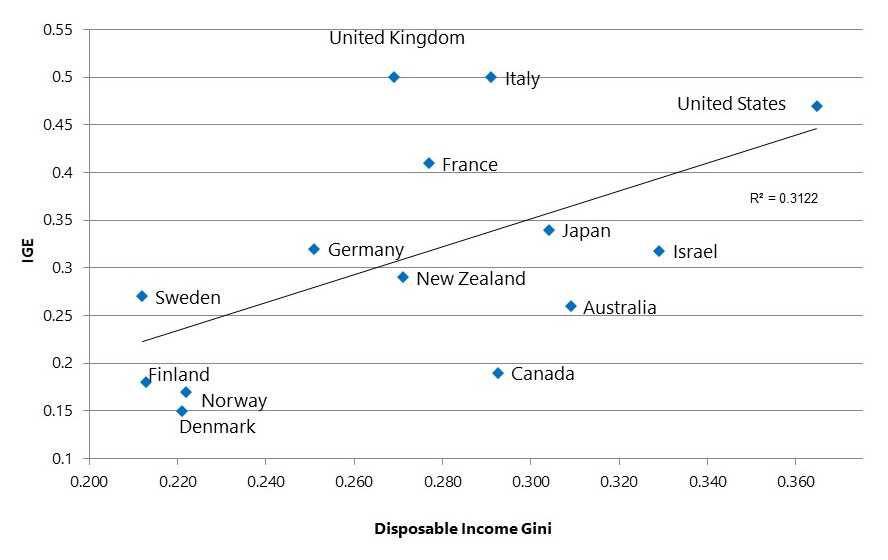In the previous post we saw that the level of inter-generational income mobility in Israel is relatively high, meaning that a child has a good chance of earning more than his parents. So the future seems bright… but consider this:
What we see today is the mobility of people who grew up during the 1970’s and 1980’s. The situation in Israel has changed dramatically since then; social gaps have deepened and economic inequality became more pronounced.
How are these changes, especially the growing inequality, connected to social mobility? The answer is in the graph below, knows as the “Great Gatsby Curve”, which plots the level of inequality vs. upward mobility in different countries.

Inequality is indicated by the Gini index, which is a measure of income distribution (with 0 representing perfect equality), while IGE (inter-generational elasticity of income) is an indicator of a lack of mobility (i.e. high value = low mobility).
As you can see, countries with a high level of inequality also tend to have a low level of mobility (high IGE). Israel, however, is an exception: it has high mobility despite being second only to the US in inequality.
According to an OECD report titled “A Broken Social Elevator?” that was published last June, social-economic mobility has been going down in most western countries since the 1990’s due to an increase in inequality. Although up-to-date figures for Israel are not available, what we do know is worrying.
The inequality in Israel in areas that affect life outcomes – education, health, employment and so on – is higher than the average for OECD countries. This applies, for example, to public investment in early childhood education; to disparities between the scores of school students; to unemployment of underprivileged young people; and more. These inequalities and their compounded impact suggest that social mobility will not remain high for long.
The bottom line: as a newly founded state, Israel has succeeded in ensuring the mobility of its younger generation. But the present inequalities, along with weakening of the public systems – especially education, welfare and health – put the mobility of our children at risk. And when they grow up and we can measure their actual mobility, it will be too late to do something about it.












